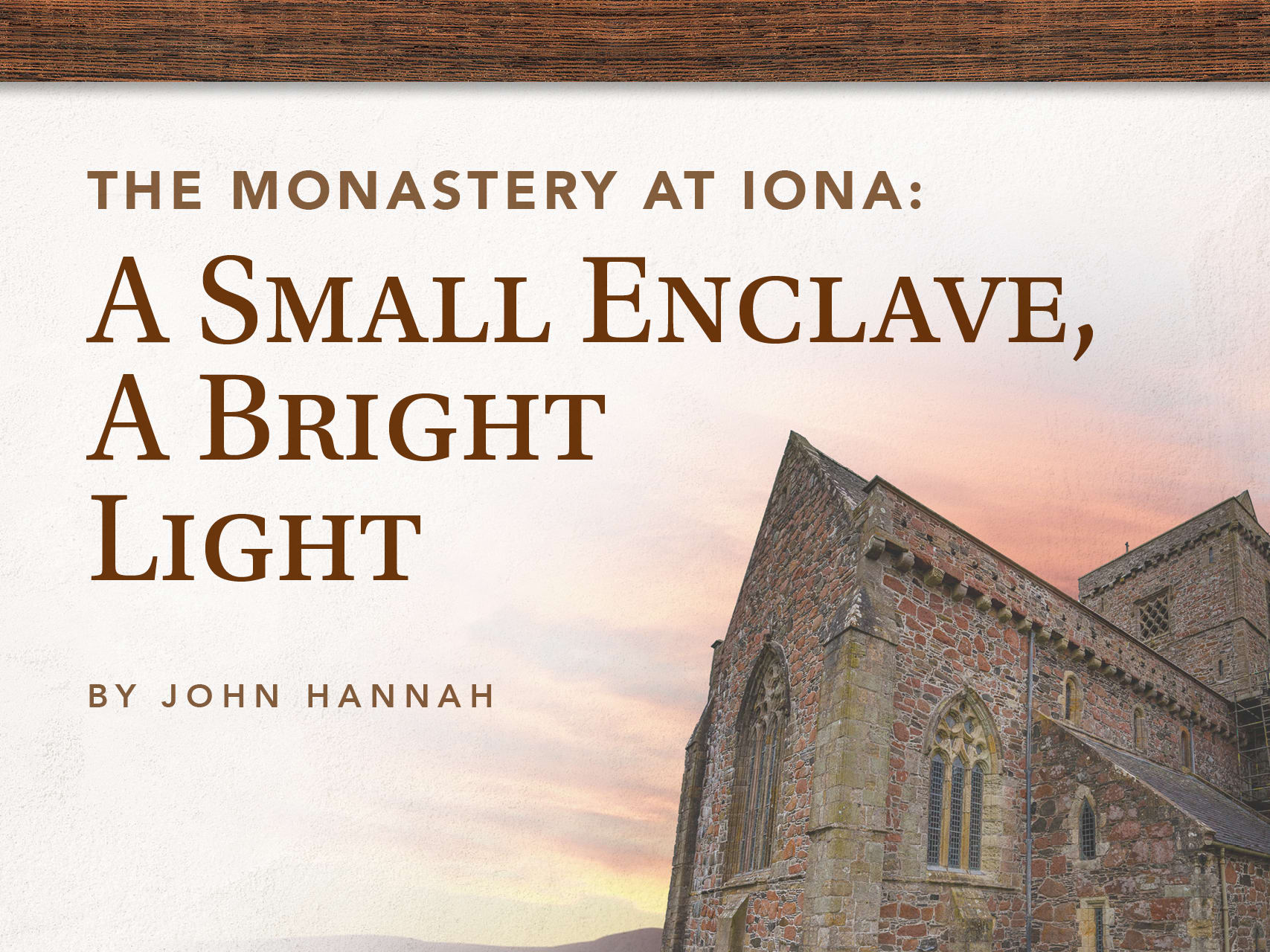The Monastery at Iona: A Small Enclave, A Bright Light

We were not sure what to expect, and were increasingly skeptical, as we took a series of ferries to reach Iona, a small island off the western coast of Scotland. Had I made a mistake in seeking out this place for a DTS tour experience? When we walked onto that obscure locale, however, it suddenly became an overwhelmingly profound emotional experience. We were in the remnants of an ancient monastery, the so-called “Light of the Western World.” I was enthralled, and the memories of the place still fill our minds with awe. Iona!
The story of Iona began when, at the edge of a crumbling empire, a young lad of sixteen was taken from his family in Roman Britain to become a slave in Ireland. The young man escaped, and shock eventually turned into compassion: he returned to Ireland to carry the gospel to the “truly enslaved”—those in the darkness of spiritual hopelessness. We know that man as St. Patrick. Ireland’s Christian faith flourished in the fifth century under his and other believers’ testimonies. Monasteries dotted the land; darkness turned into the brilliant light of divine grace.
Patrick’s example inspired generations that followed in his steps. Among them was Columba (521–597), who, with twelve others, founded Iona’s monastery in 563. Columba made the monastery into a missionary training school. As monks worshiped and worked according to Celtic disciplines, Iona became an influential center for the spread of the Christian faith. Columba carried the gospel to the Scottish clans, and his disciple Aidan founded the monastery at Lindisfarne, off the northeastern coast of England.
Why do scholars regard Iona as the “Light of the Western World”? Monasteries were not only centers for the practice and development of the spiritual disciplines but also centers of labor, combining the work of the heart with the endeavor of the hands. Monks worked in the scriptorium, rooms where ancient texts were meticulously copied by hand. Iona was a model monastery. Because of the monks’ missionary zeal to copy the biblical texts and proclaim their message, Iona became the Light of the Western World.
The manuscript that is perhaps most reflective of the value placed on the work to preserve and proclaim the Word of God is the Book of Kells, an artistically ornate copy of the four Gospels. It is now a national treasure, housed at Trinity College, Dublin. The magnificent artistry of its 680 pages indicates that its purpose was to be the pulpit Bible for a worship service. Scholars believe the work was begun in the scriptorium at Iona and completed at the Abbey of Kells, County Meath, Ireland. Its relocation to the Abbey of Kells was a response to the Viking threat in the late ninth century, which led to the martyrdom of monks at Iona and, eventually, the destruction of the monastery itself.
Today when we hold a Bible in our hands, we owe a debt of gratitude to countless stewards of God’s Word, including those at Iona, who preserved the words of Scripture through hours of tedious work with skillful hands, creative minds, and devoted hearts. Thanks be to God that through their labors, we now have the most remarkably preserved book in history.
About the Contributors

John D. Hannah
John D. Hannah (ThM, 1971; ThD, 1974) has worked at DTS for more than forty years. His interests include the history of the Christian church, with particular focus on Jonathan Edwards and John Owen. Among his published works are a history of DTS and a general history of the Christian Church.

